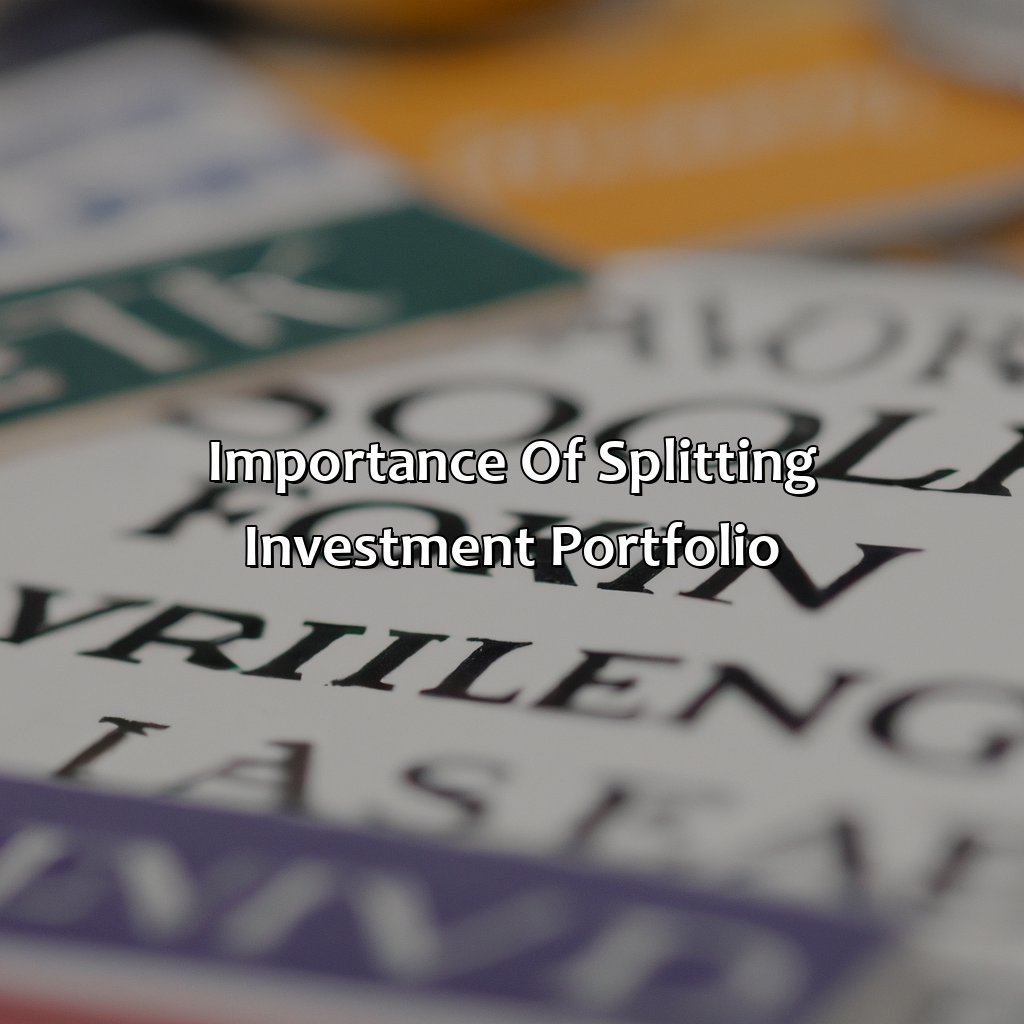How To Split Investment Portfolio?
Key Takeaway:
- Splitting investment portfolio is essential to manage risk and achieve financial goals. By diversifying your investments, you can spread risk and minimize the impact of market volatility on your portfolio.
- Consider your investment goals, risk tolerance, and the type of investments when splitting your portfolio. This will help you determine the right asset allocation that aligns with your financial objectives and investment strategy.
- Use asset allocation, diversification, and rebalancing strategies to split your investment portfolio. These key strategies can help you achieve a well-diversified portfolio and maximize your returns while minimizing risk.
Have you been wondering how to diversify your investments? Splitting your investment portfolio is an effective way to minimize risk and maximize returns. You can take control of your financial future and ensure a secure retirement with the right approach.
Importance of Splitting Investment Portfolio
Optimizing Investment Returns Through Proper Portfolio Diversification: A Professional Perspective.
Achieving maximum investment returns requires proper portfolio diversification, and this cannot be achieved unless the investment portfolio is split effectively.
By strategically allocating investments across a variety of asset classes, investors can balance their portfolio’s risk and returns effectively. As such, splitting an investment portfolio into various asset categories, such as fixed-income securities, equities, and cash, is critical. Those assets that are heavily dependent on economic cycles should be balanced with more stable investments.
Another key consideration when splitting an investment portfolio is an investor’s short-term and long-term goals. Investors with short-term goals may prioritize bonds, cash, and other investments that are stable yet provide modest returns. In contrast, investors with long-term goals may allocate more of their portfolios to high-risk/high-reward investments like stocks or real estate investment trusts (REITs).
A colleague of mine once shared that he had put all of his eggs in one basket by only investing in technology stocks. Unfortunately, he lost a significant portion of his portfolio when the technology bubble burst in the early 2000s. As a result, he learned the hard way about the importance of splitting an investment portfolio and diversifying his holdings.

Image credits: retiregenz.com by David Washington
Factors to Consider when Splitting Investment Portfolio
Investors often face the dilemma of dividing their portfolio investment. Knowing which factors to consider when splitting investment portfolios can guide better investment decisions. Here are some factors to consider when allocating your assets:
- Investment Goals and Objectives
- Asset Allocation Strategy
- Risk Profile
- Market Conditions
Considering these factors can help investors balance returns and risks. While determining asset allocation, they must also evaluate their financial goals for necessary investment and balance potential costs and before taking risks. Lastly, diversifying investments among several markets helps mitigate risks and hedge against market fluctuations. A coherent investment strategy can protect the portfolio from unfavorable market movements and ultimately yield accruals. It is crucial to evaluate and adjust investment decisions as they navigate periods of ups and downs. While exploring asset allocation, some investors may consider consulting a financial advisor to ensure decisions are in line with their financial goals. A wise allocation strategy decision can accelerate the growth of wealth and provide protection against an uncertain future.

Image credits: retiregenz.com by David Duncun
Strategies for Splitting Investment Portfolio
Investment Portfolio Splitting Techniques
Investment portfolio splitting is a crucial aspect of effective portfolio management. Diversification of investment is essential for optimum asset allocation. Follow these strategies for effective investment portfolio splitting:
- Risk Tolerance: Determine your risk tolerance to balance risk and return. This will help you select the appropriate investment categories.
- Asset Allocation: Decide the percentage of your portfolio in different types of assets such as equity, debt, real estate, and cash.
- Sector Allocation: Split your portfolio with allocations to different industry sectors such as technology, healthcare, energy, and consumer goods.
- Geographical Allocation: Allocate your portfolio among different geographic regions such as North America, Europe, the Asia-Pacific region, and emerging markets.
It is crucial to remember that asset allocation is subjective and varies depending on individual preferences. Adequate consideration must be given to various factors like liquidity, maturity, and diversification when splitting a portfolio.
A real-life example of portfolio splitting is when legendary value investor Warren Buffet bet big on Apple in 2016. The move was part of a broader strategy to diversify his portfolio and reduce his reliance on his long-standing investments in Wells Fargo and Coca-Cola. Buffet’s Berkshire Hathaway held over 133 million shares of Apple stock, which made up nearly 20% of its entire stock portfolio.
Investment portfolio splitting requires time, effort, and expert knowledge. By implementing these strategies, you can benefit from diversification of assets and reduce portfolio risk.

Image credits: retiregenz.com by James Jones
5 Facts About How To Split Investment Portfolio:
- ✅ Diversification is key to reducing risk and maximizing returns when splitting your investment portfolio. (Source: The Balance)
- ✅ Consider your goals and risk tolerance when determining your asset allocation. (Source: Investopedia)
- ✅ Rebalance your portfolio regularly to maintain your desired asset allocation. (Source: NerdWallet)
- ✅ It is recommended to have a mix of stocks, bonds, and other assets in your portfolio. (Source: CNBC)
- ✅ Working with a financial advisor can help ensure you are making informed decisions about your portfolio. (Source: Forbes)
FAQs about How To Split Investment Portfolio?
What is an Investment Portfolio?
An investment portfolio is a collection of financial assets such as stocks, bonds, cash, and other securities held by an individual or entity.
Why Should You Split Your Investment Portfolio?
Splitting your investment portfolio is crucial to ensure diversification and minimize risks. A diversified investment portfolio helps to mitigate the potential negative effects of market volatility on a single investment.
What Factors Should You Consider When Splitting Your Investment Portfolio?
When splitting your investment portfolio, you should consider your investment goals, risk tolerance, and time horizon. You should also assess your financial situation, income, and expenses before making any investment decisions.
What is the Ideal Asset Allocation for a Split Investment Portfolio?
The ideal asset allocation for a split investment portfolio depends on your investment goals and risk tolerance. Generally, a diversified portfolio should have a mix of equities, fixed income, and cash. The allocation may vary depending on your investment objectives and investment timeframe.
How Often Should You Rebalance Your Split Investment Portfolio?
It is ideal to rebalance your split investment portfolio on an annual basis or when your investment goals, risk tolerance, and financial situation change. Rebalancing helps to ensure that your portfolio remains aligned with your investment objectives and financial goals.
What Are the Risks of Not Splitting Your Investment Portfolio?
Not splitting your investment portfolio increases the risk of overexposure to a single investment and market volatility, which can result in significant financial losses. A diversified investment portfolio reduces the risk of losing your entire investment due to the negative performance of one investment.


